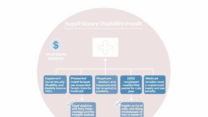
How to Write a Business Plan for Government Grants: Expert Tips
Follow Government Guidelines Precisely

When applying for government grants in the U.S., one of the most critical steps in writing a successful business plan is strictly following the official guidelines provided by the granting agency. These guidelines are not just suggestions—they are requirements that ensure your application is complete, compliant, and eligible for review.
Start by carefully reading the Request for Proposal (RFP) or Notice of Funding Opportunity (NOFO) from the agency offering the grant. These documents outline specific formatting instructions, required sections (such as executive summary, market analysis, and financial projections), and submission protocols. Missing even a small detail—like font size, page limits, or required attachments—can result in your application being rejected outright.
Each agency may have its own set of expectations. For example, the U.S. Small Business Administration (SBA) may require different information than the Department of Energy or the National Institutes of Health. Tailoring your business plan to match the exact criteria of the specific grant opportunity demonstrates professionalism and increases your chances of success.
Also, ensure that your business plan aligns with the goals and priorities of the grant program. For instance, if the grant is focused on innovation or job creation, clearly highlight how your business will contribute to those outcomes.
For detailed guidance, you can refer to the SBA’s official business plan resources here: https://www.sba.gov/business-guide/plan-your-business/write-your-business-plan
Structure Your Business Plan Effectively

When applying for government grants in the U.S., a well-structured business plan is not just helpful—it’s essential. Government agencies like the Small Business Administration (SBA) and the U.S. Department of Commerce often review hundreds of applications, so a clear, organized, and compelling business plan can make your proposal stand out.
Start with a concise executive summary that outlines your business’s mission, goals, and how the grant will help you achieve them. This section should be persuasive but brief—think of it as your elevator pitch on paper.
Next, include a detailed company description. Highlight your business structure, history, and what sets you apart in the market. This helps reviewers understand your credibility and long-term potential.
Follow with a thorough market analysis. Use current data to demonstrate demand for your product or service, identify your target audience, and show awareness of competitors. Citing sources like the U.S. Census Bureau or the Bureau of Labor Statistics can strengthen this section.
Your organizational structure should be clearly outlined, including bios of key team members and their roles. This shows that your business has the leadership to execute your plan.
The financial section is critical. Include realistic projections, a clear budget for how the grant will be used, and past financial statements if available. Government reviewers want to see that their investment will be used wisely and yield measurable results.
Finally, tailor your business plan to the specific grant’s goals and requirements. Read the grant guidelines carefully and use the language they use. This alignment shows that you’ve done your homework and increases your chances of approval.
For more guidance, the SBA offers helpful resources: https://www.sba.gov/business-guide/plan-your-business/write-your-business-plan
Avoid Common Mistakes in Grant Applications

When applying for government grants, even small mistakes can lead to rejection. Understanding and avoiding these common pitfalls can significantly improve your chances of success. First, always follow the specific instructions outlined in the grant application. Each agency may have unique formatting, documentation, and submission requirements. Failing to comply can result in automatic disqualification.
Second, avoid vague or overly broad language. Be clear and concise about your business goals, how the grant will be used, and the measurable outcomes you expect. Government reviewers are looking for well-defined plans with realistic budgets and timelines.
Third, don’t overlook the importance of supporting documentation. Include financial statements, resumes of key team members, and letters of support when required. Missing or incomplete documents can delay or derail your application.
Lastly, proofread everything. Typos, grammatical errors, or inconsistent data can reflect poorly on your professionalism and attention to detail.
For official guidance, you can refer to the U.S. Small Business Administration’s grant resources: https://www.sba.gov/funding-programs/grants
Practical Tips for a Successful Submission

When applying for government grants in the U.S., a well-prepared business plan can make all the difference. Here are some practical tips to help you create a compelling submission that increases your chances of approval.
1. Tailor Your Plan to the Grant Requirements: Each government grant has specific goals and eligibility criteria. Make sure your business plan aligns directly with the grant’s objectives. For example, if the grant supports green technology, highlight your sustainability initiatives and measurable environmental impact.
2. Be Clear and Concise: Reviewers often have to read dozens of applications. Use simple, direct language and avoid jargon. Structure your plan with clear headings, bullet points, and summaries to make it easy to scan.
3. Include Accurate Financial Projections: Government agencies want to see that your business is financially viable. Provide realistic revenue forecasts, detailed budgets, and a clear explanation of how the grant funds will be used. Back up your numbers with data and cite your sources when possible.
4. Show Community Impact: Many government grants prioritize businesses that benefit their local communities. Explain how your business creates jobs, supports underserved populations, or contributes to economic development.
5. Review and Edit Thoroughly: Before submitting, have multiple people review your plan for clarity, grammar, and accuracy. A polished, error-free document shows professionalism and attention to detail.
6. Use Official Resources: Utilize tools and templates from trusted sources like the U.S. Small Business Administration (SBA) to guide your writing process. Their website offers free resources and examples to help you get started: https://www.sba.gov/business-guide/plan-your-business/write-your-business-plan
By following these practical tips, you’ll not only improve your chances of securing funding but also create a stronger foundation for your business’s future.







